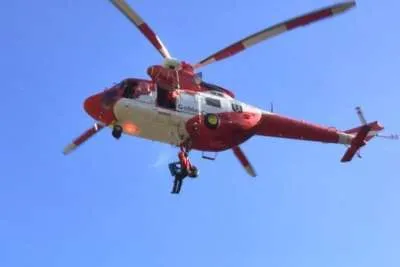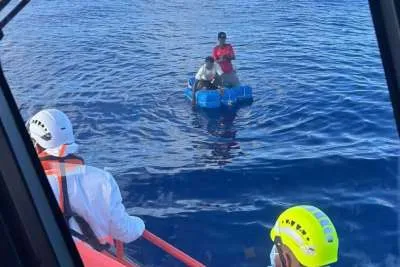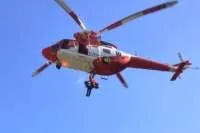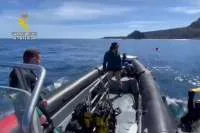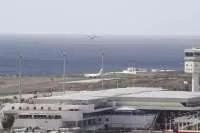VIDEO: Red Bull athlete defies gravity for worlds first wingsuit altitude gain over the Canary Islands
- 20-11-2025
- National
- Canarian Weekly
- Photo Credit: Red Bull
- Video Credit: Instagram / Red Bull and Prada
Red Bull has achieved what was long thought impossible in the skies above the Canary Islands, where an Austrian wingsuit pilot has managed to maintain, and even gain, altitude while flying without any motorised assistance. The feat represents a breakthrough in human flight and a challenge to the limits of aerodynamics.
Austrian wingsuit pioneer Peter Salzmann defied gravity and set a world milestone by soaring like a bird over El Hierro, climbing in altitude thanks to an innovative aerofoil wing inspired by Formula One technology.
Among El Hierro’s dramatic volcanic cliffs, Salzmann took human flight a step closer to avian behaviour. For the first time in history, a wingsuit pilot using a profiled wing has glided without losing height and, crucially, has gained altitude, something previously considered unachievable in moderate wind conditions.
Using a specially designed lightweight aerofoil wing attached to his wingsuit, Salzmann harnessed the rising air currents along a mountain ridge, climbing up to 67 metres during the flight, roughly the height of a 22-storey building. According to Red Bull, this marks the first time a wingsuit flyer has managed positive altitude gain in natural conditions without extreme winds.
“I was able to glide along the mountain, turn, and after 40 seconds come back past the same point, only higher,” Salzmann said on Red Bull’s website.
Over 160 seconds of flight along the ridge, Salzmann performed multiple 180-degree turns while losing less than 200 metres of height overall. In comparison, a typical wingsuit flight would lose ten times that altitude in the same duration.
What makes this achievement even more remarkable is the moderate wind speed. Previous attempts at upward wingsuit flight have required powerful winds of 120 km/h or more, conditions found only in very specific locations. Salzmann succeeded with winds of around 40 km/h, similar to those comfortably flown by paragliders.
Advanced Technology Behind the Wing
The secret lies in the profiled wing: a lightweight aerodynamic surface designed to increase lift without turning the wingsuit into a paraglider or hang glider, which rely on much larger wings for sustained ascent. This innovative wing allowed Salzmann to climb while preserving the feeling and control of pure wingsuit flight.
The wing was developed by Red Bull Advanced Technologies, using the same high-precision computer simulations employed in the design of Formula One cars. Austrian wingsuit expert Andreas Podlipnik designed and built the aerofoil, fine-tuning its behaviour to allow precise manoeuvring close to the ridge, where lift is strongest but the margin for error is smallest.
Salzmann described the flight as the most technically demanding of his career. Controlling both the wingsuit and the wing simultaneously required exceptional sensitivity: “I had to fly the wing very close to stall point, because that’s where it produces the most lift at such a high angle of attack,” he explained. “Because both the lift and the rising air aren’t constant, I had to make constant micro-corrections in direction and angle.”
The breakthrough opens new horizons for the future of wingsuit flight, bringing humans one step closer to soaring like birds, without engines, and now, without losing height
Other articles that may interest you...
Trending
Most Read Articles
Featured Videos
A Vision of Elvis Tenerife Promo
- 10-05-2025
TEAs 2025 Highlights
- 17-11-2025









